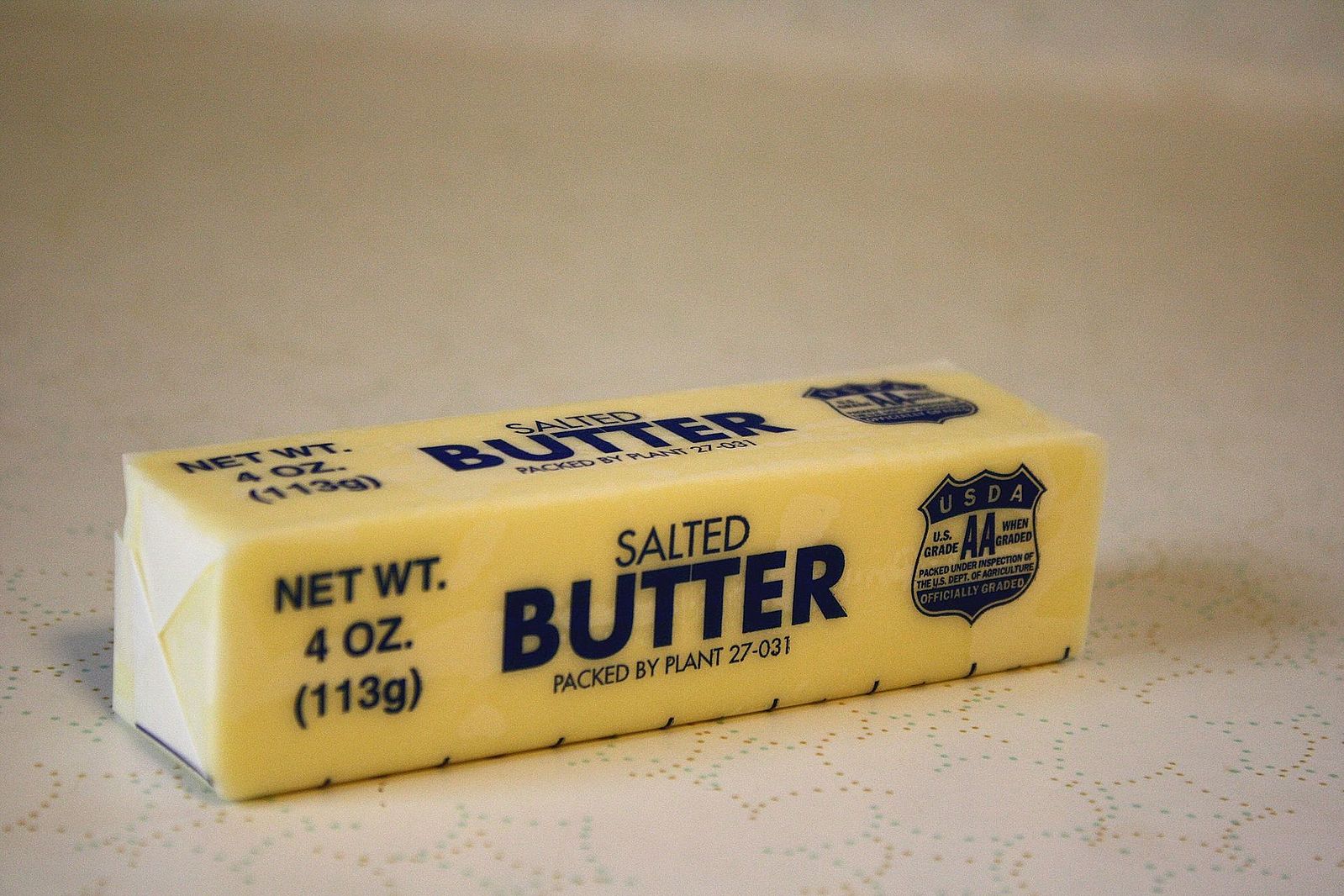Difference Between Cheese and Butter
Cheese and butter are both dairy products and their main ingredient is milk. However, butter uses milk fat while cheese is mostly milk protein. The manufacturing process of cheese differs. The enzyme rennet is added to the milk to make it curdle and start the process of making cheese. Making cheese is a coagulation process while making butter is a separation process. The uses of cheese and butter in the culinary world differ too. They serve different purposes because essentially, they are different products.

What is Cheese?
Cheese is coagulated or curdled milk. Cheese can be made from different kinds of milk including cows, buffalo, goats, camels, reindeer and even sheep. Today cheese is mostly made from cow’s milk because it is cheaper. Traditionally some cheeses commonly used today, like mozzarella, came from buffalo milk. The flavor and texture of cheese can vary depending on the different additives used in the curing process.
Cheese flavors range from mild to medium and sharp or even extra sharp. A cheese like cheddar may fit into all the ranges from mild to sharp. The texture of cheese varies from soft to semi soft and hard. Soft cheeses are mild and hard cheeses have a stronger flavor. Cheese is used to make sauces and can be grated as a topping. Cheese keeps well and some cheese matures with age.

What is Butter?
Butter differs from cheese in the manufacturing process. The milk is separated when butter is made. The fats are separated from the buttermilk or liquid. The milk fat is mixed with casein and milk protein. Butter is made with fermented or unfermented milk. Sometimes salt is added.
Butters can have different flavors ranging from mild to salty. Garlic or lemon and other flavors may be added to butter.
Types of butter include salted or unsalted, cultured and clarified butter as well as vegan butter and gee.
Difference in the uses and values of cheese and butter
Cheese is an additive to many Italian dishes and cheese sauces. Cheese is used as a spread and a topping. Butter is used for cooking and baking and provides the fat content for many recipes. Cheese is lower in fats and calories, but rich in mineral and vitamin content. Butter is mostly fat and has a high calorie content. Cheese is a good source of calcium for healthy teeth and bones. Butter contains some healthy fatty acids that help with thyroid health.
Experts in diet and nutrition favor cheese for the health benefits it offers. Both of these products have vitamins and dietary values, but cheese has less calories and helps to reduce the onset of osteoporosis. Butter, because of its fat content is not seen to be as healthy unless a high fat diet is being followed.
Chart to compare Cheese and Butter

Summary of the differences and similarities between Cheese and Butter
- Cheese and butter are classified as dairy products.
- They originate from the same basic ingredient, milk, but the process they go through to reach their end goal is different.
- Cheese has more variety of types and flavours.
- Butter and cheese are part of different culinary delights.
- Both of these dairy products have healthy minerals and vitamins, but cheese seems to come out on top as a healthy food product.
- Difference Between Lagoon and Bay - October 20, 2021
- Difference Between Futurism and Preterism - August 12, 2021
- Difference Between Dichotomy and Paradox - August 7, 2021
Search DifferenceBetween.net :
Leave a Response
References :
[0]Image credit: https://commons.wikimedia.org/wiki/File:Stick-of-butter-salted.jpg
[1]Image credit: https://live.staticflickr.com/7656/16989438268_82c5dc364c_b.jpg
[2]Jaron. 10th June 2020. www.foodsguy.com. Cheese versus Butter: the actual Difference. Pub. Elli and Tee Inc.
[3]Pinkerella. March 30th 2020. www.pinkerella.com. Butter vs Cheese What’s the difference and which is healthier.
[4]Mazmanyan Victoria. December 18th 2020. www.foodstruct.com. Cheese vs Health Impact and Nutrition Comparison. Pub. FoodStruct 2016n-2020.
